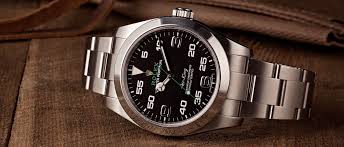Affordable Rolex Air King Replica Watches For Sale | Big Discount Replica Watch Shop
Rolex Air King Replica Watches, launched in late 1960s, was an attempt to solve the puzzle of improving the accuracy of the chronograph.
Horology isn't your typical competitive sport. The "Olympics of Accuracy" were put to rest when the Swiss chronometer tests were cancelled at the end of 1960. A recent attempt to revive the event in the Concours De Chronometrie was hampered due to the extremely limited number of participants. Although certified accuracy is out of style, healthy competition seems to be sweeping the world. It is the thinness of the record that is falling. But a few years ago, the chronograph frequency was the focus with its ever-increasing claims for accuracy.
The frequency of the movement is a measure of how precisely the chronograph second hand can display the time. Speedmasters with 321 calibers beat at 2.5 Hz.Rolex Air King Replica Watches This means that each beat is about 0.2 seconds. Early 7750 calibers were able to run at 3 Hz, with each beat being 0.167 seconds. Later 7750s, and Rolex Daytona caliber 4130, run at 4 Hz. This allows a display of just 0.125 seconds.
Breguet introduced their reference 3880 chronograph in 2010, which featured a 10Hz escapement and allowed a display as small as 0.05 seconds. TAG Heuer's Mikrotimer was able to display 0.001 seconds at 500 Hz in 2011. The following year, TAG Heuer doubled their frequency to 1000Hz with the Mikrogirder and displayed 0.0005 seconds - still a record to this day.
The Nonius comes with an additional gauge at the tip of the chronograph second hand for greater precision reading
In the late 1960s, Longines developed a unique approach to chronograph accuracy. The Nonius watch was equipped with an additional gauge at the end of the chronograph second hand. This allowed for greater precision when reading the timing result.Patek Philippe Replica Watches To confuse matters, "nonius", a term that was used in English up until the end 18th century, is the name of a Vernier Scale. The French mathematician Pierre Vernier created his scale in 1631, while Pedro Nunes developed a slightly different predecessor 90 year earlier.
